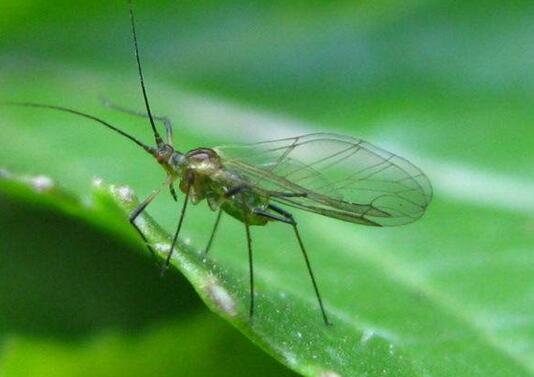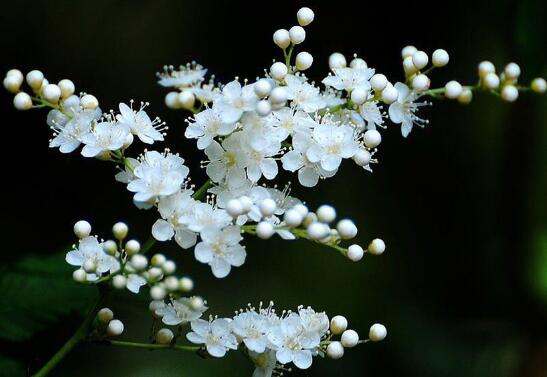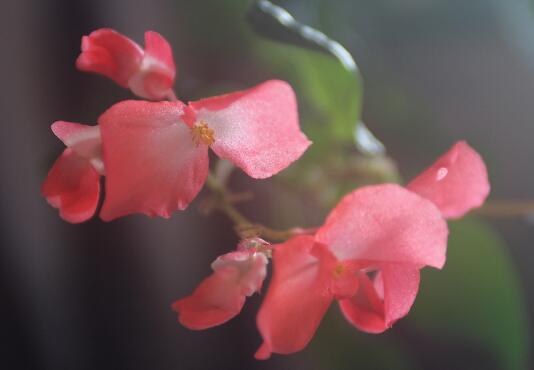Seven methods can effectively reduce the occurrence of diseases and insect pests in the control of diseases and insect pests.
Colored leaf grass is very popular because of its beautiful plant shape, rich leaf color and easy landscaping, but even if it has strong adaptability, it will inevitably be plagued by diseases and insect pests. what if it grows insects or diseases? Let's take a look at the prevention and control of diseases and insect pests.
Prevention and control of diseases and insect pests of colored leaf grass
1. Aphids

There are many kinds of aphids on the earth, and more than 200 species of aphids do serious harm to colored leaf grass. It will hide on the leaf surface of colored leaf grass to absorb juice, and it will change color, curl and wither, which is one of the natural enemies of most plants.
Control measures: when a large number of aphids appear, it is necessary to spray 3000 times of aldicarb wettable powder. In terms of prevention, it is necessary to brush the base white when the temperature drops in autumn, and then prune the residual flowers and withered branches to prevent aphids from spawning.
2. Red spider
Red spiders have a strong ability to reproduce, so when red spiders are found on colored leaf grass, they should be dealt with as soon as possible. It usually occurs in mid-May, and when it is more serious in June, it can cause leaves to turn yellow and white, leading to malnutrition of coloured leaf grass.
Control measures: red spiders are high-temperature active pests, so it is necessary to avoid colored leaf grass in a high-temperature and dry environment. When there is an insect pest, it can be sprayed with 1000 times of phenyledalin EC, once every 10 days, twice can basically clean up the red spider.
3. Leaf curlers
The most common place where leaf curlers appear is on the leafy plants, which is one of the most harmful pests in the pest control of colored leaf grass. It will feed on the mesophyll, causing the color of the leaves to deteriorate, and then appear withered and yellow and begin to fall leaves in the period of vigorous growth.
Control measures: leaf curlers have phototaxis, so you can use black light to trap and kill adults. In addition, drugs can also be used for prevention and treatment, such as spraying with 1000 times of 25% imidathion EC and 1000 times of 50% phoxim EC.
Colourful leaf grass disease
1. Stem blight
The disease spot is oval at first, then becomes brown sunken ulcer, then extends from the stem to the whole plant, and finally makes the disease spot become dark brown dry rot, the leaf surface will appear brown irregular disease spot, the edge curls and the whole plant dies.
Control measures: in the control of color leaf grass diseases and insect pests, stem blight is usually sprayed with 500 times of 70% methyl thiophanate wettable powder or 75% chlorothalonil wettable powder, which can effectively control the disease. In the usual maintenance process, we should pay attention to the plant should not be too dense, maintain light transmission can prevent stem blight.
2. Anthrax
Often occurs on the leaf tip of colourful leaf grass, first brown spots appear, and then continue to expand, the whole leaf shows brown ripples, disease spots will also appear gray spots, and then small spots become together, causing the leaves to yellow and wither and fall off.
Prevention and control measures: spray with 25% carbon powder 500 times wettable powder solution, once every 7-10 days, 3 times can basically prevent anthrax from spreading. The diseased leaves should be removed and burned in time to avoid residual germs on the leaves.
3. Epidemic disease
The leaf changes from bright color to brown, the surface of the leaf begins to rot, the green waterlogged disease spot appears at the base of the stem, and the branches and leaves begin to wither. if the blight is not dealt with in time, it will cause stem blight, and the main reason is that the light transmission is too poor caused by not thinning for a long time, coupled with the muggy environment.
Control measures: cut off diseased branches and leaves to increase light transmission and reduce nutrient loss; at the same time, spray 25% metalaxyl wettable powder 800 times.
4. Leaf blight
Usually, brown spots begin to appear at the tip of the leaves, and then spread to the base of the leaves, the leaves change from green and red to grayish brown, black spots appear on the back, the leaves grow slowly and the leaves fall early.
Control measures: thoroughly clean up the disease and fallen leaves, in order to reduce the number of bacteria, and then strengthen maintenance and management; when the disease occurs, you want to spray 1000 times of carbendazim wettable powder or 65% Dysen zinc.
Prevention and control of diseases and insect pests of colourful leaf grass 1. The environment of high temperature and humidity in the greenhouse is very suitable for the reproduction of a variety of pathogens, and the most serious and harmful is the blight, which is caused by Fusarium, Rhizoctonia and Pythium. Generally speaking, the occurrence of the disease is the most serious in about 20 days after the seedlings are unearthed, and the bacteria carried in the soil is the main cause of the disease. The symptoms are as follows: plant withering, quenching and decay. At this time, watering should be controlled and properly ventilated. After the seedlings were unearthed, Luheng No. 1 and Luheng No. 2 should be sprayed for chemical control. 2. Control during the growing period (1) Common diseases and control methods Botrytis cinerea: this is a common fungal disease of grass flowers, the disease is Botrytis cinerea, which can harm leaves, stems, flowers and fruits. At the initial stage of damage, the leaves showed water-stained spots and gradually expanded into brown and dark brown soft rot. The same is true of buds. When the humidity is high, the disease is gray mildew, the disease is very easy to repeat, so the prevention and treatment of gray mold must persevere. In the maintenance and management, we should apply less nitrogen fertilizer, and in the chemical control, we should choose Nongliling, Shijiale, Botrytis cinerea, Leidomir and so on. Blight: also a fungal disease that invades from the root of the flower and the base of the stem. In the early stage, the diseased site showed water-stained dark green spots, which could develop into dark-brown patches. In severe cases, the stem of the whole plant became black and rotted, which led to the dysfunction of the cortex and eventually led to the death of the plant. It is found that the disease can be sprayed and controlled by Frost epidemic Sukang, Antaisheng, Mancozeb, Redomir and so on. Sclerotinia sclerotiorum: it is caused by Sclerotinia sclerotiorum infection. The pathogen also invaded from the base of the stem, and light brown watery spots appeared at the initial stage of the disease, which spread to the stem and petiole; when it was rotten and wet, the disease produced white cotton-like mycelium. The disease can be controlled by spraying pentachloronitrobenzene, sclerotia and bacteriophage. White silk disease: the pathogen mainly invades from the stem and root of the plant. Most of the disease occurred at the base of the stem, the diseased site showed brown rot and white silk-like material grew in the disease. 5% carbendazim 1000 times solution can be selected to spray rhizosphere soil for control. Bacterial soft rot: the diseased site is waterlogged at first, then turns brown and then becomes sticky, slippery and soft rot, mixed with white, yellow or grayish brown paste in the soft rot tissue and can give off a foul smell. Agricultural streptomycin can be used for chemical control, which can be used to spray diseased plants and rhizosphere soil. The symptoms of blight, Sclerotinia sclerotiorum, white silk disease and bacterial soft rot are similar and should be carefully analyzed. Although they are controlled watering and proper ventilation in terms of cultivation and management, the chemical control is different. Powdery mildew: young leaves, buds and pedicels that harm flowers. First, there are white powder spots in the affected parts, which are gradually covered to form a layer of white powder. The affected parts are bent and deformed, and the florets are so few that they do not bloom. The disease is often found in plants such as melon and leaf chrysanthemum, impatiens, rose and so on. Drug control can choose Jiaotou, Fuxing and so on. Rust: this disease often occurs in leaves, fruits and branches, and is common in chrysanthemums. There are orange to dark brown powder piles, scars or hairs in the affected parts. It can be controlled by trimethoprim, tocopherol, carbendazim, Fuxing and other agents. Black spot, brown spot: these two diseases mainly harm leaves, to control watering, reduce humidity, chemical control can be used chlorothalonil, tow. Virus disease: a disease caused by tiny parasites, the damaged plants are prone to twist, leaf curling, dwarfism and other symptoms. The control agents are Jiedukang, small leaf enemy and virus A mixed spray, W2000 and so on. (2) Common insect pests and control methods: red spiders occurred in the environment of high temperature and low humidity, the affected parts lost chlorosis with gray-yellow spots, and finally the leaves withered. Chemical control can choose dimethoate, omethoate, Bleba, Uranus, dichlorvos and so on. Aphids: mostly absorb the nutrients of flowers on the back of the leaves, making the leaves discolored and curled. Chemical control can choose dichlorvos, dimethoate, first clear, Kangfuduo and so on. Scale insects: there are many species, the body is small, and its body surface is often covered with waxy shells. Chemical control can choose quick-killing medium, omethoate, dichlorvos. Whitefly: small, white, flying ability is not strong, damaged leaves withered and yellow shedding. Enemy killing, dimethoate, omethoate and dichlorvos spray can be selected for control. Liriomyza huidobrensis: larvae drill into the mesophyll of flowers and pierce the leaves into winding yellow-white tunnels. The damage began in May and lasted until August. Can be root irrigation 40% omethoate EC 1000 times solution for prevention and control. Control of common diseases and insect pests of colourful leaf grass
1. Prevention and control at seedling stage
The environment of high temperature and humidity in the greenhouse is very suitable for the reproduction of a variety of pathogens, and the most serious and harmful disease is Rhizoctonia solani, which is caused by Fusarium, Rhizoctonia and Pythium. Generally speaking, the occurrence of the disease is the most serious in about 20 days after the seedlings are unearthed, and the bacteria carried in the soil is the main cause of the disease. The symptoms are as follows: plant withering, quenching and decay. At this time, watering should be controlled and properly ventilated. After the seedlings were unearthed, Luheng No. 1 and Luheng No. 2 should be sprayed for chemical control.
2. Prevention and control during the growing period
(1) Common diseases and their control methods
Botrytis cinerea: this is a common fungal disease of grass flowers. The disease is Botrytis cinerea, which can harm leaves, stems, flowers and fruits. At the initial stage of damage, the leaves showed water-stained spots and gradually expanded into brown and dark brown soft rot. The same is true of buds. When the humidity is high, the disease is gray mildew, the disease is very easy to repeat, so the prevention and treatment of gray mold must persevere.
Prevention and control methods: less nitrogen fertilizer should be applied in maintenance and management, and Nongliling, Shijiale, Botrytis cinerea, Leidomir and so on should be selected in chemical control.
Blight: also a fungal disease that invades from the root of the flower and the base of the stem. In the early stage, the diseased site showed water-stained dark green spots, which could develop into dark-brown patches. In severe cases, the stem of the whole plant became black and rotted, which led to the dysfunction of the cortex and eventually led to the death of the plant.
Prevention and treatment methods: it is found that Frost epidemic Sukang, Antaisheng, Mancozeb, Redomir and so on can be sprayed to prevent and cure the disease.
Sclerotinia sclerotiorum: it is caused by Sclerotinia sclerotiorum infection. The pathogen also invaded from the base of the stem, and light brown watery spots appeared at the initial stage of the disease, which spread to the stem and petiole; when it was rotten and wet, the disease produced white cotton-like mycelium.
Prevention and treatment methods: pentachloronitrobenzene, sclerotia and bacteriophage can be selected for spray control of the disease.
White silk disease: the pathogen mainly invades from the stem and root of the plant. Most of the disease occurred at the base of the stem, the diseased site showed brown rot and white silk-like material grew in the disease.
Control method: 1000 times solution of carbendazim can be selected to spray rhizosphere soil for control.
Bacterial soft rot: the diseased site is waterlogged at first, then turns brown and then becomes sticky, slippery and soft rot, mixed with white, yellow or grayish brown paste in the soft rot tissue and can give off a foul smell.
Control methods: agricultural streptomycin can be used for chemical control, which can be used to spray diseased plants and rhizosphere soil.
The symptoms of blight, Sclerotinia sclerotiorum, white silk disease and bacterial soft rot are similar and should be carefully analyzed. Although they are controlled watering and proper ventilation in terms of cultivation and management, the chemical control is different.
Powdery mildew: young leaves, buds and pedicels that harm flowers. First, there are white powder spots in the affected parts, which are gradually covered to form a layer of white powder. The affected parts are bent and deformed, and the florets are so few that they do not bloom. The disease is often found in plants such as melon and leaf chrysanthemum, impatiens, rose and so on.
Prevention and control methods: drug control can choose Jiaotou, Fuxing and so on.
Rust: this disease often occurs in leaves, fruits and branches, and is common in chrysanthemums. There are orange to dark brown powder piles, scars or hairs in the affected parts.
Prevention and control methods: it can be controlled by trimethoprim, tocopherol, carbendazim, Fuxing and other agents.
Black spot and brown spot: these two diseases mainly harm leaves.
Prevention and control methods: to control watering, reduce humidity, chemical control can be used chlorothalonil, tow.
Virus disease: a disease caused by tiny parasites, the damaged plants are prone to twist, leaf curling, dwarfism and other symptoms.
Control methods: the control agents are Jiedukang, small leaf enemy and virus A mixed spray, W2000 and so on.
(2) Common insect pests and their control methods
Red spider: occurs in high temperature, low humidity environment, the affected part of the chlorosis has gray-yellow spots, and finally the leaves withered.
Prevention and control methods: chemical control can choose dimethoate, omethoate, Bleba, Uranus, dichlorvos and so on.
Aphids: mostly absorb the nutrients of flowers on the back of the leaves, making the leaves discolored and curled.
Prevention and control methods: dichlorvos, dimethoate, Yichuanqing, Kangfuduo and so on can be used for chemical control.
Scale insects: there are many species, the body is small, and its body surface is often covered with waxy shells.
Prevention and control methods: quick-killing medium, omethoate and dichlorvos can be used for chemical control.
Whitefly: small, white, flying ability is not strong, damaged leaves withered and yellow shedding.
Prevention and control methods: enemy killing, dimethoate, omethoate, dichlorvos spray and so on can be selected for control.
Liriomyza huidobrensis: larvae drill into the mesophyll of flowers and pierce the leaves into winding yellow-and-white tunnels. The damage began in May and lasted until August.
Prevention and control method: 1000 times of omethoate EC can be irrigated to the root for prevention and treatment.
- Prev

What to do with the growing insects of Pearl Plum? pest control of Pearl Plum / 2 insect pests 2 diseases
When people cultivate pearl plum, the last thing they want to encounter is the phenomenon of diseases and insect pests, which does great harm to pearl plum, not only affects the ornamental, but also causes the plant to die if it is not treated for a long time. What about the pearl plum worm? What should be done to control diseases and insect pests of Pearl Plum?
- Next

What to do with the growing insects of the four seasons crabapple? pest control of the four seasons crabapple / 2 insect pests 2 diseases
In the growth process of the four seasons begonia, the last thing people want to encounter is the problem of diseases and insect pests, which is extremely harmful to the four seasons crabapple. If it is not dealt with in time, it is easy to cause the plant to wither and die. What about the long bugs of the four seasons crabapple? What are the pest control methods of Begonia in four seasons?
Related
- Fuxing push coffee new agricultural production and marketing class: lack of small-scale processing plants
- Jujube rice field leisure farm deep ploughing Yilan for five years to create a space for organic food and play
- Nongyu Farm-A trial of organic papaya for brave women with advanced technology
- Four points for attention in the prevention and control of diseases and insect pests of edible fungi
- How to add nutrient solution to Edible Fungi
- Is there any good way to control edible fungus mites?
- Open Inoculation Technology of Edible Fungi
- Is there any clever way to use fertilizer for edible fungus in winter?
- What agents are used to kill the pathogens of edible fungi in the mushroom shed?
- Rapid drying of Edible Fungi

